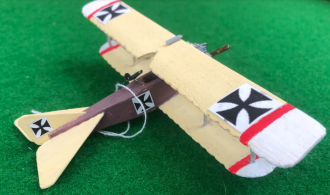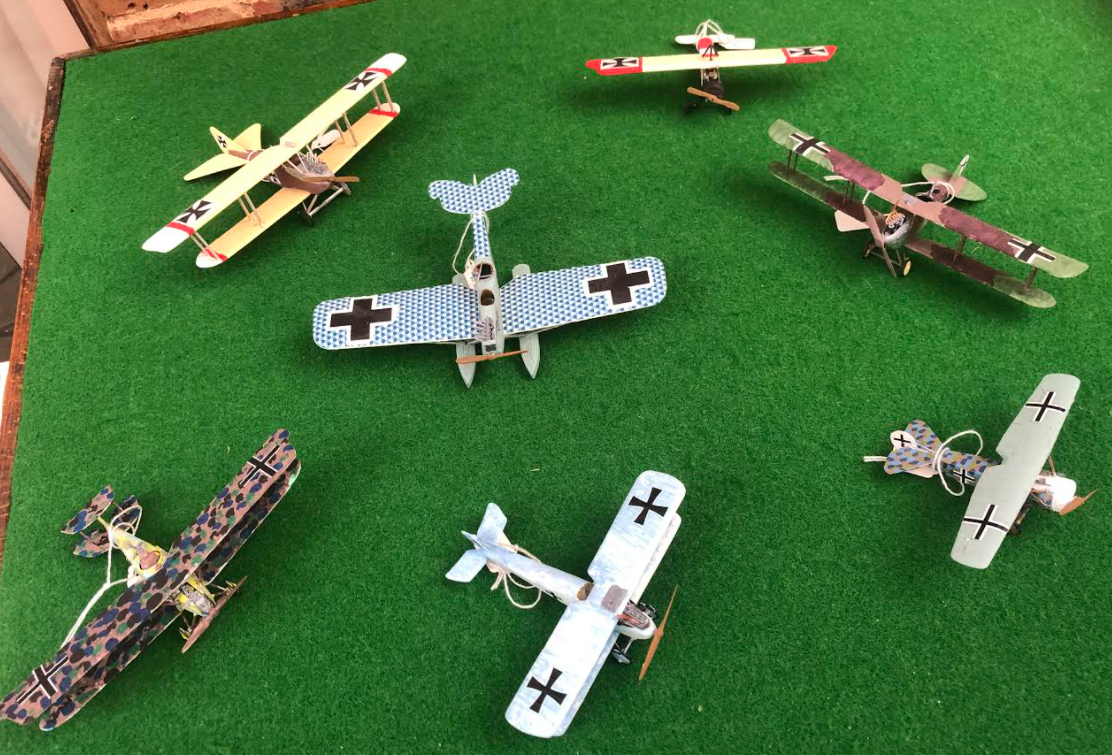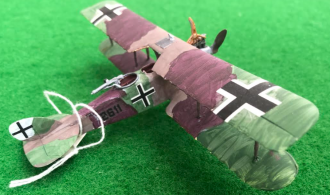Selection of WW1 German Aircraft
The Imperial German Air Service (Deutsche Luftstreitkräfte) grew out of the need to put an end to frequent incursions by French observers during the first weeks of the war. The initial deployment of German fighter aircraft occurred within the Observer Corps, which were being equipped with one or two of the new Fokker Eindecker fighter aircraft for each The buildup of the Eindecker fighter force rapidly progressed with regular lMG 08 “Spandau”-armed production examples of the Fokker E.I.
The first step towards specialist single seater fighter-only aviation units within the German military was the establishment of Kampfeinsitzer Kommando (KEK) in February 1916. These were based around Eindeckers and other new fighter designs emerging, like the Pfalz E-series.
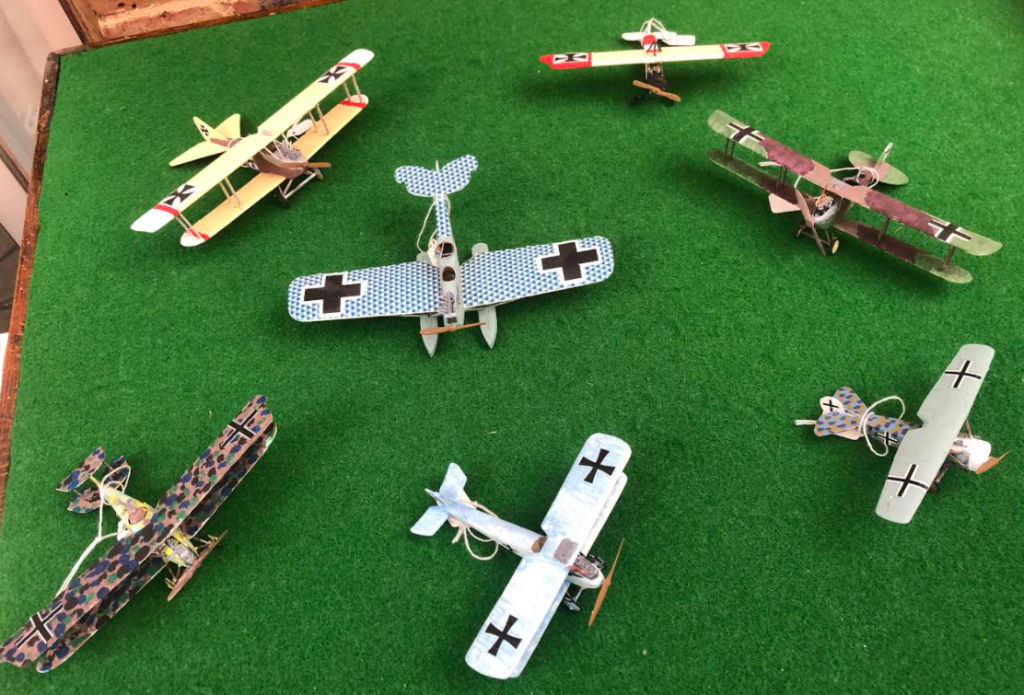
Fokker E.V / D.V111, Halberstadt D.II, Hannover CL.III,
Centre = Hansa-Brandenburg W.29
Following the era of the KEK units through the summer of 1916, Jagdstaffeln (hunting squadrons), established by the reorganization that started by the late summer of 1916 were fielded by four kingdoms of the German Empire. Individually – each of these units was often known by the abbreviation “Jasta”. The Kingdom of Prussia was predominant, with a fighter force eventually comprising 67 squadrons. The Kingdom of Bavaria formed ten of these units, the Kingdom of Saxony formed seven and the Kingdom of Württemberg four.
On 24 June 1917, the Luftstreitkräfte brought a quartet of Jasta squadrons together to form its first fighter wing, Royal Prussian Jagdgeschwader I, incorporating Jastas 4, 6, 10 and 11, and set the pattern for using Roman numerals in the Luftstreitkräfte in the titles of such larger units. Manfred von Richthofen was moved up from command of Jasta 11 to command JG I.
Fighter pilots received the most attention since it produced high-scoring “aces” such as Manfred von Richthofen, known as The Red Baron. With 80 confirmed kills he is considered the most successful fighter pilot of the war. Other notable German pilots from the Fokker Scourge onwards included Ernst Udet, Erich Löwenhardt, Werner Voss, Josef Jacobs, Lothar von Richthofen, Wilhelm Frankl, Hermann Göring, Max Immelmann and the master aerial tactician Oswald Boelcke., In total 76 airmen were awarded the Pour le Mérite (the Blue Max).
By the end of the war, the German Army Air Service possessed a total of 2,709 frontline aircraft, 56 airships, 186 balloon detachments and about 4,500 flying personnel. Over the war German casualties totalled 4,579 aircrew and 1,962 men killed in flying accidents in Germany. Material losses by enemy action were 3,126 aircraft, 546 balloons and 26 airships. Some 7,425 Allied aircraft and 614 kite balloons were claimed as destroyed.
Throughout the War, apart from some occasions, Germany had the better range of Aircraft. One reason for this was an 6 monthly “competition” were new prototypes were assessed by flying “Aces” combat pilots, with the best going into production. Germany had the largest number of aircraft types numbering over 120. Germany also supplied its aircraft to other Central Power Countries.
Major German Aircraft Companies include :-
AEG
AGO
Albatros
Aviatik
Daimler
DFW
Euler
Fokker
Friedrichshafen
Gotha
Halberstadt
Hannover
Hansa-Brandenburg
Junkers
Kondor
LFG Roland
LVG
Pfalz
Rumpler
Schutte-Lanz
Schwade Kampfeinsitzer
Siemens-Schuckert
Zeppelin
Zeppelin-Staaken
Aircraft of the Week
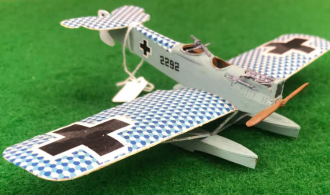
Hansa-Brandenburg W.29
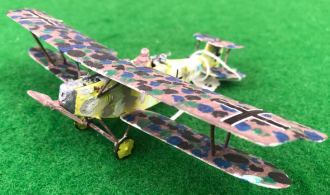
HANNOVER CL.III
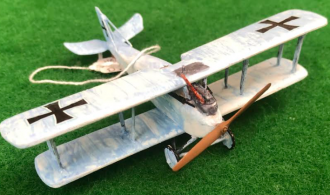
HALBERSTADT D.II
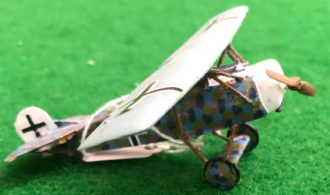
Fokker E.V / D.V111
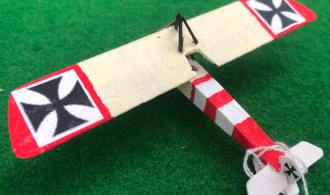
PFALZ A. 1 (A.11)
